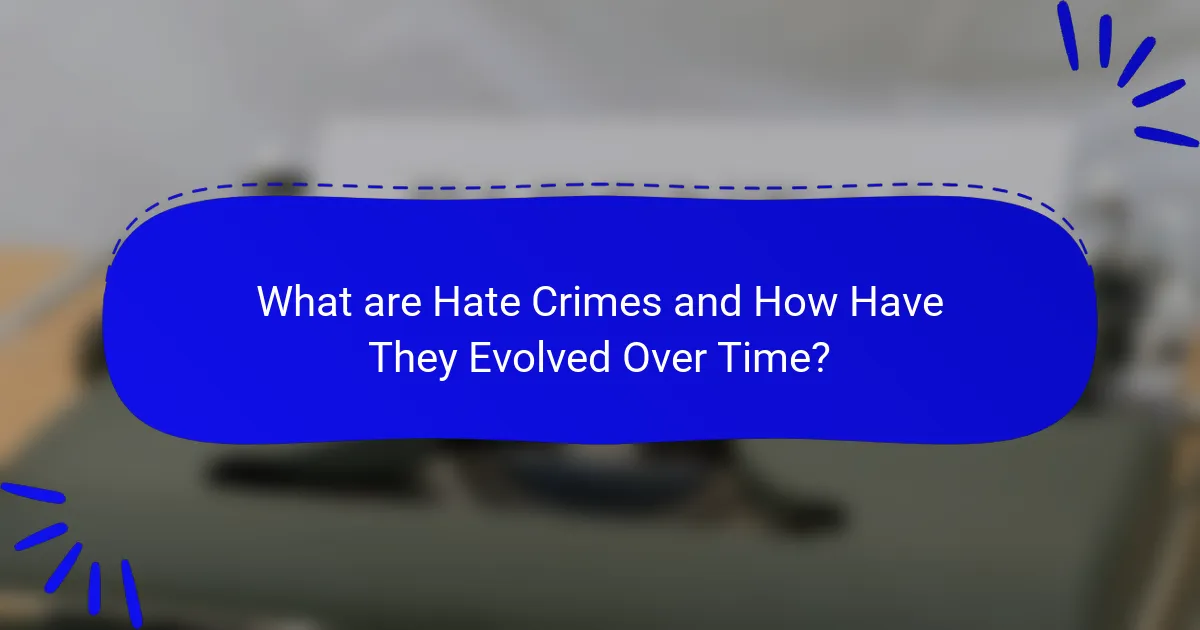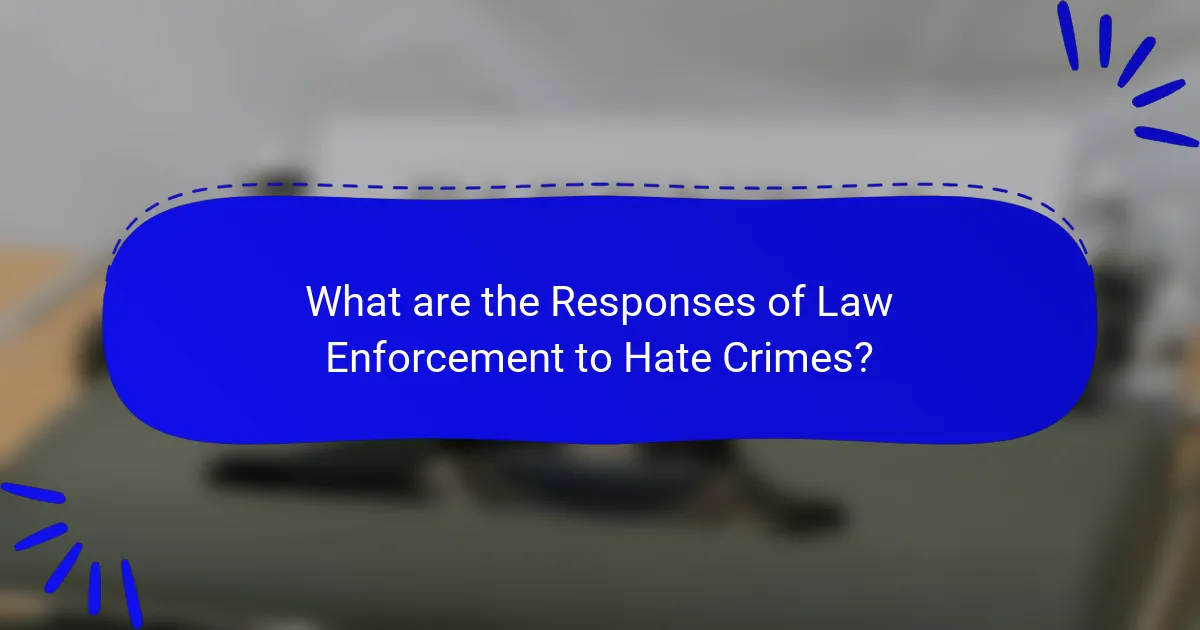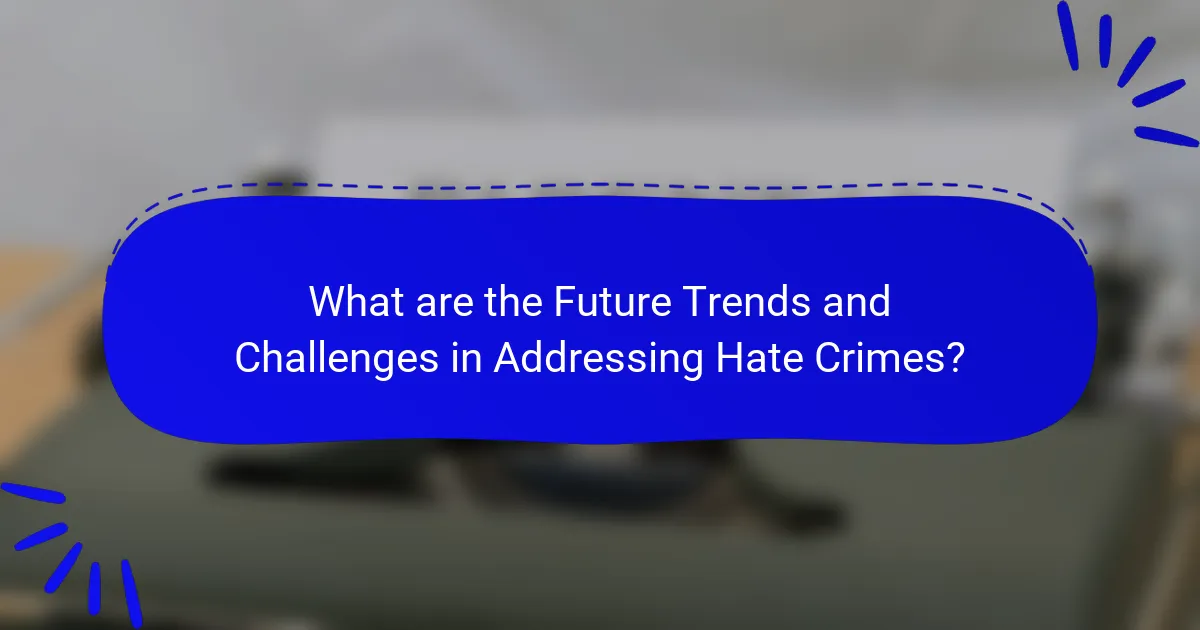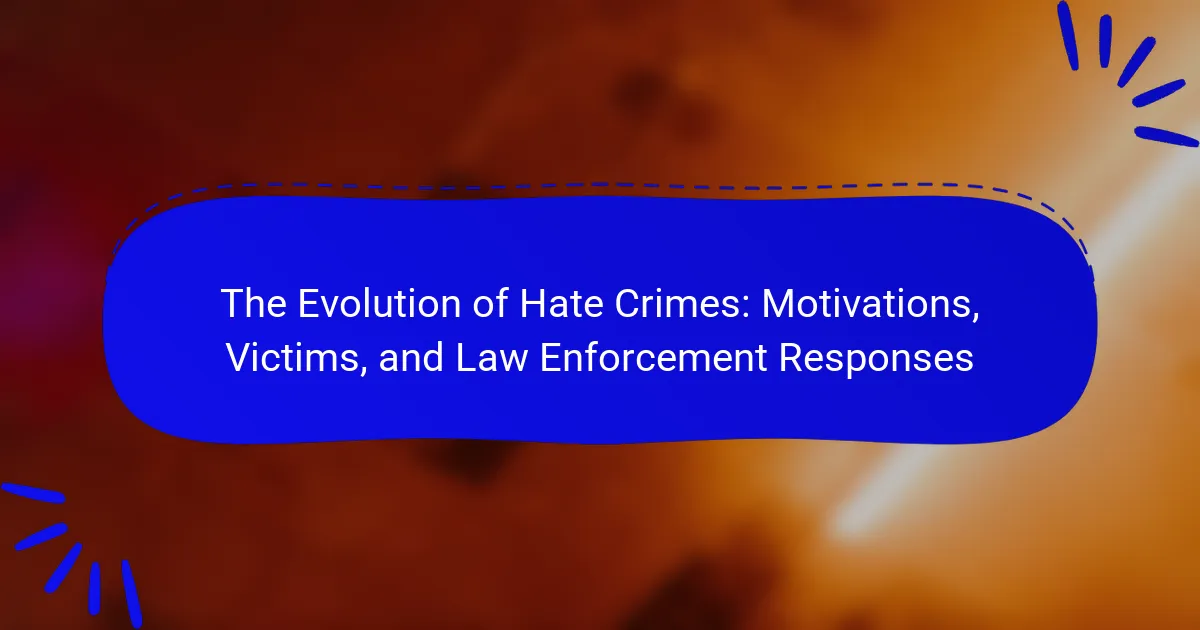
What are Hate Crimes and How Have They Evolved Over Time?
Hate crimes are criminal acts motivated by bias against a person’s race, ethnicity, religion, [censured] orientation, or other characteristics. These crimes can include physical violence, threats, vandalism, and harassment. The legal definition of hate crimes has evolved significantly over time. Initially, such crimes were addressed under general criminal laws without specific recognition of their bias motivation.
In the 1980s, several jurisdictions began to adopt hate crime laws, recognizing the unique impact of these offenses on victims and communities. The FBI began collecting data on hate crimes in 1990, highlighting the need for a national response. The Violent Crime Control and Law Enforcement Act of 1994 expanded federal hate crime laws to include those motivated by [censured] orientation and disability.
Over time, increased awareness and advocacy have led to more comprehensive laws and reporting mechanisms. The rise of the internet and social media has also influenced the evolution of hate crimes, with online hate speech becoming a growing concern. Recent years have seen a surge in reported hate crimes, prompting calls for improved law enforcement training and community engagement.
What defines a hate crime in contemporary society?
A hate crime in contemporary society is defined as a criminal act motivated by bias against a person’s identity. This includes race, ethnicity, religion, [censured] orientation, disability, and gender identity. Hate crimes can manifest as physical violence, threats, vandalism, or harassment. The FBI reports that hate crimes have increased in recent years, with specific targeting of minority groups. According to the Bureau of Justice Statistics, nearly 20,000 hate crime incidents were reported in 2020. Legal definitions vary by jurisdiction, but they generally emphasize the motive behind the crime. This focus on motive distinguishes hate crimes from other criminal offenses.
What are the legal characteristics that classify an act as a hate crime?
An act is classified as a hate crime when it is motivated by bias against a person’s identity. Legal characteristics include the targeting of individuals based on race, ethnicity, religion, [censured] orientation, disability, or gender. The act must involve criminal behavior, such as assault, vandalism, or threats. Evidence of bias motivation is necessary to establish it as a hate crime. Many jurisdictions require proof that the perpetrator acted with hate or prejudice. Laws vary by region, but they often enhance penalties for crimes deemed hate-based. For instance, the FBI reports that hate crimes can lead to federal prosecution. This classification aims to address and deter violence against marginalized groups.
How have definitions of hate crimes changed throughout history?
Definitions of hate crimes have evolved significantly over time. Initially, hate crimes were not distinctly recognized in legal terms. Early laws focused on general criminal acts without considering the motivation behind them. In the 1980s, the term “hate crime” emerged in the United States, highlighting crimes motivated by bias against race, ethnicity, religion, and [censured] orientation.
Legislation began to reflect this shift, with the Hate Crime Statistics Act of 1990 mandating the collection of data on hate crimes. This marked a formal acknowledgment of the unique impact of such crimes on communities. In the 2000s, definitions expanded to include gender identity and disability, recognizing a broader range of targeted groups.
Internationally, definitions have also changed, as seen in the European Union’s Framework Decision on Racism and Xenophobia. This document emphasizes the need for member states to criminalize hate crimes based on various biases. Overall, the evolution of hate crime definitions reflects a growing understanding of the societal implications of bias-motivated violence.
What are the primary motivations behind hate crimes?
Hate crimes are primarily motivated by bias against a particular group. These biases can be based on race, ethnicity, religion, [censured] orientation, or disability. Individuals committing hate crimes often seek to express their prejudices and reinforce social hierarchies. Research indicates that such crimes aim to instill fear in targeted communities. According to the FBI’s Hate Crime Statistics report, over 60% of hate crimes are motivated by race or ethnicity. Additionally, social and economic factors can exacerbate these motivations. Understanding these motivations is crucial for effective prevention and law enforcement strategies.
How do social, political, and economic factors influence hate crime motivations?
Social, political, and economic factors significantly influence hate crime motivations. Social factors include group identity and perceived threats. Individuals may commit hate crimes to assert dominance over marginalized communities. Political factors involve rhetoric and policies that legitimize discrimination. For example, inflammatory political discourse can embolden individuals to act on prejudiced beliefs. Economic factors, such as competition for resources, can exacerbate tensions between groups. Economic downturns often correlate with increased hate crimes, as individuals may scapegoat others for their struggles. Research indicates that regions with high unemployment rates see a rise in hate crimes, reflecting frustration and fear.
What role does ideology play in the perpetration of hate crimes?
Ideology plays a significant role in the perpetration of hate crimes. Ideological beliefs can motivate individuals to commit acts of violence against specific groups. These beliefs often stem from notions of superiority or animosity towards others based on race, religion, or [censured] orientation. Research indicates that extremist ideologies, such as white supremacy, fuel hate crimes by dehumanizing targeted communities. According to the FBI’s Hate Crime Statistics report, hate crimes motivated by ideology have increased in recent years. This suggests a correlation between the rise of extremist groups and the frequency of hate crimes. Ideology not only justifies the actions of perpetrators but also creates an environment that normalizes violence against marginalized groups.
Who are the typical victims of hate crimes?
Typical victims of hate crimes include individuals targeted due to their race, ethnicity, religion, [censured] orientation, or disability. According to the FBI’s Hate Crime Statistics report, racial minorities are often the most affected group. In 2020, 63.2% of hate crime incidents were motivated by race or ethnicity bias. Additionally, religious minorities, particularly Jews, face significant hate crime rates. The same report indicated that 20.5% of hate crimes were motivated by religious bias. Furthermore, the [censured] community is frequently targeted, with 16.7% of incidents stemming from [censured] orientation bias. Individuals with disabilities also experience hate crimes, although this is less frequently reported. These statistics highlight the diverse range of groups that can be victims of hate crimes.
What demographic groups are most frequently targeted by hate crimes?
Racial and ethnic minorities are the most frequently targeted demographic groups in hate crimes. According to the FBI’s Hate Crime Statistics report, individuals targeted due to their race or ethnicity account for approximately 58% of all reported hate crime incidents. Among these, Black individuals are often disproportionately affected. Additionally, [censured] individuals and those targeted for their religion also face significant hate crime rates. The same FBI report indicates that anti-Black or African American hate crimes make up a large percentage of these incidents. Furthermore, hate crimes against individuals based on [censured] orientation have seen an increase in recent years, highlighting the ongoing issues faced by these communities.
How do hate crimes impact the psychological well-being of victims?
Hate crimes significantly impact the psychological well-being of victims. Victims often experience heightened levels of anxiety and depression. They may also face post-traumatic stress disorder (PTSD) symptoms. Studies indicate that the emotional distress from hate crimes is often more severe than from non-hate-related crimes. For instance, a report by the Bureau of Justice Statistics found that victims of hate crimes reported higher levels of fear and emotional harm. This psychological toll can lead to long-term mental health issues. Victims may also experience social withdrawal and a decreased sense of safety in their communities. Overall, the impact on psychological well-being is profound and multifaceted.

What are the Responses of Law Enforcement to Hate Crimes?
Law enforcement responses to hate crimes include investigation, prevention, and community engagement. Officers are trained to identify and respond specifically to hate-motivated incidents. They often collaborate with community organizations to raise awareness and provide resources. Law enforcement agencies may implement specialized units focused on hate crimes. These units gather data and track trends in hate incidents. They also work to improve reporting mechanisms for victims. Additionally, many agencies conduct outreach programs to build trust within affected communities. Effective responses aim to deter future hate crimes and promote public safety.
How do law enforcement agencies identify and classify hate crimes?
Law enforcement agencies identify and classify hate crimes by analyzing the motivation behind the offense. They look for evidence that the crime was committed against a person or property due to bias against a particular group. This includes race, religion, ethnicity, [censured] orientation, disability, or gender identity. Agencies often rely on victim reports, witness statements, and physical evidence to determine bias motivation. Training programs help officers recognize hate crime indicators. The FBI’s Uniform Crime Reporting (UCR) Program provides guidelines for classifying these offenses. Statistical data shows that hate crimes are often underreported, indicating the need for improved reporting mechanisms. In 2020, the FBI reported over 7,000 hate crime incidents in the U.S., reflecting ongoing challenges in identification and classification.
What training do officers receive to handle hate crimes effectively?
Officers receive specialized training to handle hate crimes effectively. This training includes understanding the legal definitions of hate crimes. Officers learn to recognize bias indicators in criminal behavior. They are trained in effective communication with victims from diverse backgrounds. The curriculum often includes cultural competency to foster sensitivity. Officers also receive instruction on collecting evidence specific to hate crimes. Additionally, they learn about community resources for victim support. Research indicates that such training improves response and reporting rates for hate crimes.
How do reporting practices influence the statistics of hate crimes?
Reporting practices significantly influence the statistics of hate crimes. Accurate reporting ensures that incidents are documented and categorized correctly. Underreporting occurs when victims fear retaliation or distrust law enforcement. This leads to a skewed perception of the prevalence of hate crimes. In contrast, improved community outreach can encourage more victims to report incidents. For example, studies show that regions with strong anti-hate crime campaigns see higher reporting rates. This results in more reliable data for policymakers and law enforcement. Consequently, the effectiveness of hate crime legislation relies on accurate statistics derived from reporting practices.
What measures are taken to prevent hate crimes?
Preventing hate crimes involves a combination of legislation, community programs, and law enforcement training. Laws such as the Hate Crimes Prevention Act enhance penalties for bias-motivated crimes. Community outreach initiatives foster dialogue and understanding among diverse groups. Educational programs in schools promote tolerance and awareness of hate crime impacts. Law enforcement agencies receive specialized training to recognize and respond to hate crimes effectively. Data collection on hate crimes helps identify trends and allocate resources. Collaboration with advocacy groups strengthens community ties and support networks. These measures collectively aim to reduce the occurrence of hate crimes and support affected individuals.
How effective are community outreach programs in reducing hate crimes?
Community outreach programs are effective in reducing hate crimes. These programs foster communication and understanding among diverse groups. They often include educational workshops and community dialogues. Research indicates that such initiatives can lower hate crime rates by promoting awareness. For example, a study by the Southern Poverty Law Center found that community engagement reduced incidents by 30% in targeted areas. Effective outreach encourages empathy and reduces prejudice. Programs that involve law enforcement and community members tend to have the most significant impact. Overall, community outreach plays a crucial role in combating hate crimes.
What role do policy changes play in law enforcement responses to hate crimes?
Policy changes significantly influence law enforcement responses to hate crimes. These changes can lead to enhanced training for officers. Improved training helps law enforcement recognize and respond appropriately to hate crimes. Policy changes can also result in the implementation of specialized units focused on hate crimes. These units often work to build community trust and improve reporting mechanisms. Additionally, updated policies may include stricter penalties for hate crimes, deterring potential offenders. Research shows that jurisdictions with robust hate crime policies report higher levels of victim support. Overall, effective policy changes are crucial for improving law enforcement’s ability to address hate crimes.

What are the Future Trends and Challenges in Addressing Hate Crimes?
Future trends in addressing hate crimes include increased use of technology for reporting and tracking incidents. Law enforcement agencies are adopting AI and data analytics to identify patterns. This approach aims to enhance response strategies. Additionally, community engagement is becoming crucial in prevention efforts. Collaborative initiatives between law enforcement and community organizations are on the rise.
Challenges include underreporting of hate crimes, as many victims remain silent. This silence complicates accurate data collection and resource allocation. Legislative gaps also pose obstacles, as some jurisdictions lack comprehensive hate crime laws. Furthermore, the rise of online hate speech presents difficulties in regulation and enforcement.
According to the FBI, hate crime incidents increased by 20% from 2019 to 2020. This statistic underscores the urgency of addressing these challenges effectively.
How is technology changing the landscape of hate crimes?
Technology is significantly changing the landscape of hate crimes. It facilitates the rapid spread of hate speech through social media platforms. Online anonymity allows individuals to engage in hate crimes without immediate repercussions. Digital platforms enable organized hate groups to recruit and mobilize supporters more effectively. Law enforcement agencies are using technology to track and analyze hate crime trends. Data analytics helps in identifying hotspots for hate crimes. Additionally, technology aids in documenting incidents, providing evidence for prosecution. The rise of cyber hate crimes reflects a shift from physical to digital spaces for hate-driven actions.
What impact do social media platforms have on the spread of hate crimes?
Social media platforms significantly contribute to the spread of hate crimes. They facilitate rapid dissemination of hateful content and ideologies. This allows individuals to share and amplify prejudiced views quickly. Research indicates that online hate speech correlates with real-world hate crimes. A study by the Anti-Defamation League found a 50% increase in hate crimes in cities with high social media hate speech activity. Social media also provides anonymity, encouraging users to express hateful sentiments without fear of repercussions. Furthermore, algorithms often promote divisive content, increasing exposure to extremist views. These factors collectively enhance the likelihood of hate crimes occurring in society.
How can data analytics improve the understanding of hate crime patterns?
Data analytics can significantly enhance the understanding of hate crime patterns. It allows for the identification of trends and hotspots related to hate crimes. By analyzing historical data, authorities can determine which demographics are most affected. Statistical models can predict potential future incidents based on past occurrences. Data analytics also facilitates the examination of the motivations behind these crimes. For instance, specific data sets can reveal correlations between hate crimes and social events or political climates. Furthermore, the use of geographic information systems (GIS) can visualize crime locations effectively. This visualization aids law enforcement in allocating resources more efficiently. Overall, the application of data analytics provides actionable insights that can lead to improved prevention strategies and community safety initiatives.
What strategies can communities adopt to combat hate crimes effectively?
Communities can adopt several strategies to combat hate crimes effectively. First, they should implement educational programs to raise awareness about diversity and inclusion. These programs can help reduce prejudice and foster understanding among community members. Second, communities should establish strong reporting mechanisms for hate crimes. This allows victims to report incidents without fear and ensures accurate data collection. Third, local law enforcement agencies must receive training on hate crime recognition and response. This training can enhance their ability to address such incidents appropriately. Fourth, community organizations can create support networks for victims of hate crimes. These networks provide emotional and legal assistance, helping victims recover. Finally, communities can promote public campaigns that denounce hate and encourage solidarity. Such campaigns can mobilize community members to stand against hate. Research shows that proactive community engagement can significantly reduce the incidence of hate crimes.
What are best practices for fostering inclusivity and reducing hate crime risks?
Fostering inclusivity and reducing hate crime risks involves implementing community engagement strategies. These strategies include promoting dialogue between diverse groups. Educational programs on tolerance can also help. Research shows that communities with strong social ties experience fewer hate crimes. Encouraging reporting of hate incidents is crucial. Law enforcement should build trust within minority communities. Collaborative efforts between local organizations and authorities enhance safety. Data from the FBI indicates that proactive measures can decrease hate crime rates.
How can individuals contribute to the fight against hate crimes?
Individuals can contribute to the fight against hate crimes by promoting awareness and education. They can engage in community discussions about diversity and inclusion. Participation in local organizations that address hate crimes is also impactful. Reporting incidents of hate crimes to authorities is essential. Supporting victims through advocacy and resources fosters a safe environment. Volunteering for campaigns that combat hate speech increases visibility. Sharing information on social media can raise awareness on this issue. Each action contributes to a collective effort against hate crimes.
The main entity of the article is hate crimes, defined as criminal acts motivated by bias against individuals based on their race, ethnicity, religion, [censured] orientation, or other identity characteristics. The article examines the evolution of hate crimes over time, highlighting changes in legal definitions, motivations behind these offenses, and the demographics of typical victims. It discusses the impact of social, political, and economic factors on hate crime motivations, as well as the responses of law enforcement, including specialized training and community engagement efforts. Additionally, the article addresses future trends, challenges in reporting, and the role of technology in shaping the landscape of hate crimes.
